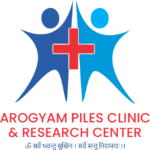Introduction:
Kshar Sutra is a traditional Ayurvedic treatment that has been used for centuries to manage various ano-rectal disorders, including hemorrhoids (piles), fistulas, pilonidal sinus, and fissures. One common concern among individuals considering this treatment is whether it is painful. In this blog, we will delve into the details of the Kshar Sutra treatment, its effectiveness, and address the question of pain associated with the procedure.
Understanding Kshar Sutra Treatment:
Kshar Sutra treatment involves the use of a specialized medicated thread, known as Kshar Sutra, which is prepared using a combination of natural herbs and alkaline substances. The thread is carefully inserted into the affected area, such as a fistula tract or hemorrhoidal mass, and left in place for a specific duration. The active ingredients of the Kshar Sutra gradually work on the affected tissues, promoting healing and eliminating the pathological tissue.
Effectiveness of Kshar Sutra Treatment:
Kshar Sutra treatment has gained popularity due to its high success rate and minimal recurrence rates compared to other conventional treatments. The alkaline nature of the Kshar Sutra helps in destroying the diseased tissues, promoting healing, and preventing infection. Additionally, the thread also acts as a draining mechanism, allowing the discharge of pus or fluids from the affected area. The combination of these factors contributes to the effectiveness of the treatment.
Is Kshar Sutra Treatment Painful?
The level of pain experienced during the Kshar Sutra treatment can vary from person to person. However, it is essential to note that the procedure is usually performed under local anesthesia, which ensures that the patient remains comfortable throughout the process. Local anesthesia numbs the area, reducing or eliminating any pain or discomfort during the insertion of the Kshar Sutra thread.
After the procedure, some individuals may experience mild discomfort, such as a sensation of tightness or a dull ache. This discomfort is usually temporary and can be managed with mild pain medications prescribed by the treating physician. It is crucial to follow the post-treatment care instructions provided by your healthcare provider to ensure proper healing and minimize any potential discomfort.
Benefits of Kshar Sutra Treatment:
1. Non-surgical approach: Kshar Sutra treatment is a non-surgical procedure, making it suitable for individuals who want to avoid surgery or have certain medical conditions that make them ineligible for surgical interventions.
2. High success rate: The treatment has shown remarkable success in managing various ano-rectal conditions, providing long-term relief and reducing the chances of recurrence.
3. Minimal invasiveness: The minimally invasive nature of Kshar Sutra treatment results in faster recovery and fewer complications compared to traditional surgical procedures.
4. Preservation of sphincter function: Unlike some surgical techniques, Kshar Sutra treatment preserves the sphincter function, reducing the risk of fecal incontinence.
Conclusion:
Kshar Sutra treatment is a time-tested Ayurvedic therapy used for managing ano-rectal disorders. While the level of pain experienced during the procedure may vary from person to person, the use of local anesthesia helps ensure a comfortable experience. The benefits of Kshar Sutra treatment, such as its non-surgical approach, high success rate, and minimal invasiveness, make it a viable option for individuals seeking effective treatment for conditions like hemorrhoids, fistulas, and fissures. It is essential to consult with a qualified Ayurvedic practitioner or healthcare provider to determine if this treatment is suitable for your specific condition.




